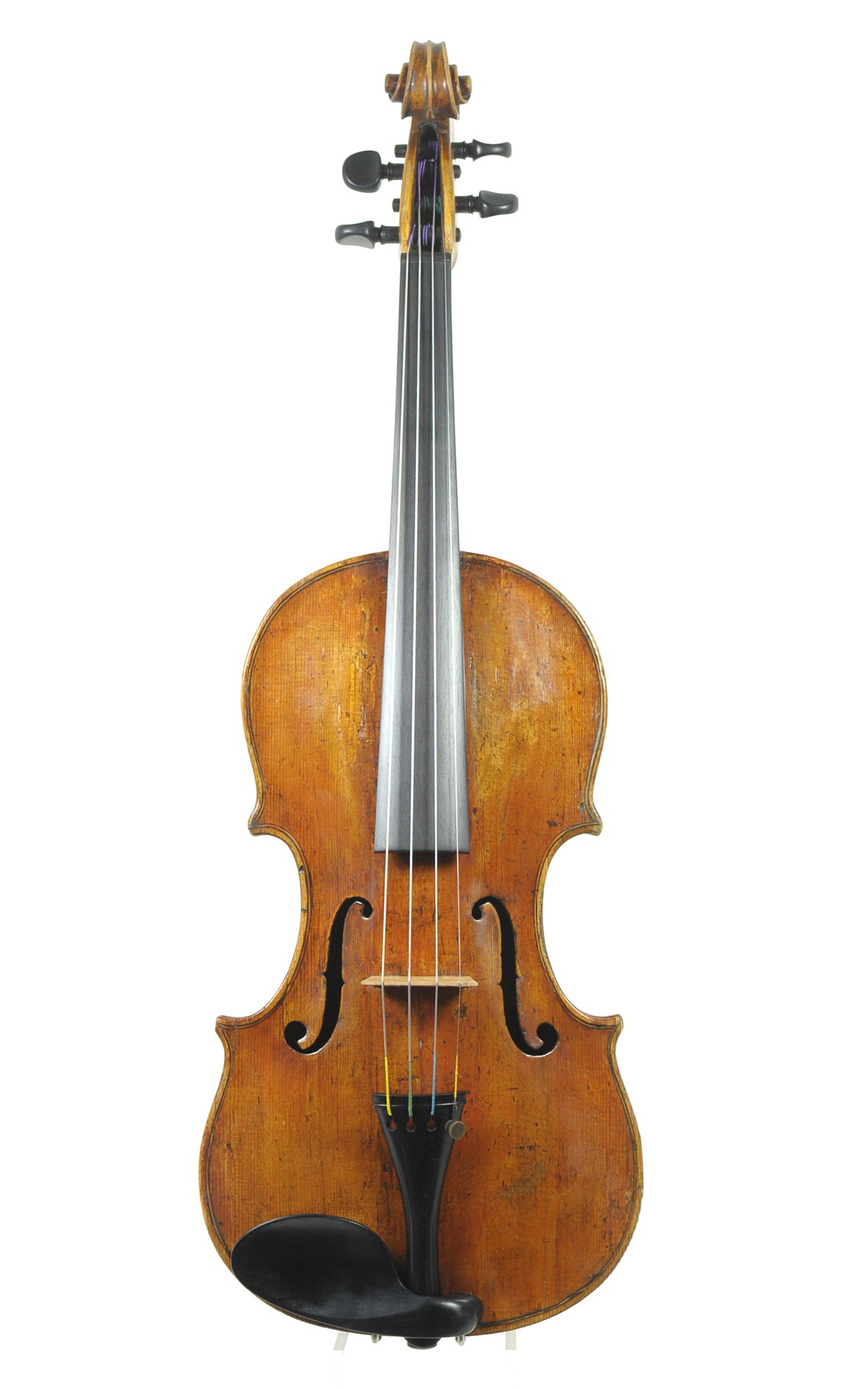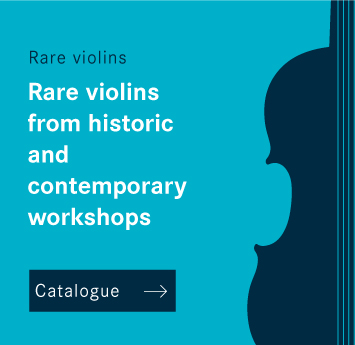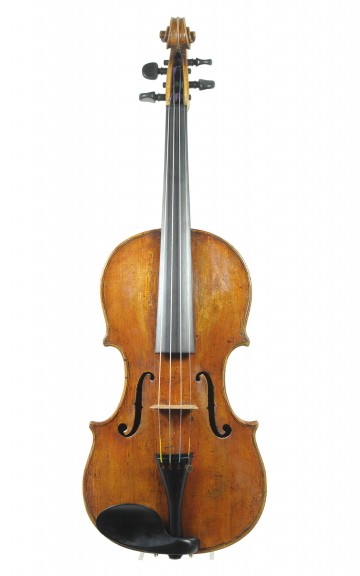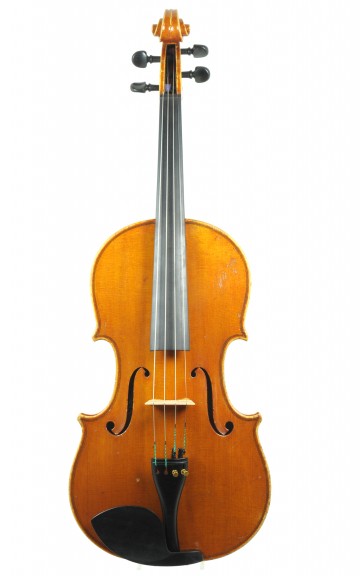Rome, for centuries the center of the world, plays a surprisingly minor role in the history of violin making. However, it is by no means an easy question to answer what conclusions can be drawn from this observation about the musical life of the "eternal city" in the age of the violin. 
Overview:
- The beginnings of violin making in Rome
- The "Roman school" around David Tecchler
- Other historical Roman violin makers
- Luthiers in Rome today – contemporary masters
In particular, only a few Roman violin makers are known to research from the early days of violin making in the late 16th century, but also up to the end of the 17th century; among them, there are hardly any outstanding masters and school education, even in a family context, is extremely rare. Whether the conservative attitude of the Catholic Church in the aftermath of the Council of Trent is to blame for the obvious lack of demand for high-quality violin-making services in the Papal States is a somewhat speculative theory. It is more likely that Cremona and Brescia, the violin-making centers of northern Italy, dominated the Italian market after their early rise – and that the fellow members of the guild of Nicolò Amati and Antonio Stradivari had little more to do in Rome than to maintain and repair imported violins.
The beginnings of violin making in Rome
The first historically documented violin maker in Rome was Orazio di Giovanni Filippo, who, without a surname, is mentioned in a court document in 1554 as a liutaio. However, due to the well-known vagueness of this occupational title, it remains unclear whether Orazio built string instruments at all or only plucked instruments.
Like Orazio di Giovanni Filippo, most Roman liutai of the 16th and 17th centuries probably came to Rome from elsewhere, for example Paolo Albani (1633–1680), who, coming from Palermo, probably learned the art of violin making from Nicolò Amati and is considered one of the best of his generation. There is no evidence of autochthonous teacher-pupil relationships in this phase of Roman violin-making history, and the beginnings of a "Roman school" can only be recognized later and to a comparatively small extent.
The "Roman School" around David Tecchler
David Tecchler (c. 1666–1747) is the most important figure in the early history of Roman violin making, and his work, which was inspired by Cremonese models and also shows the influence of Jakob Stainer, represents an independent and historic achievement. His cellos in particular are still extremely popular among today's top musicians, even though only a few instruments have survived in their original, very large model.
 Even though there is a lack of historically verified information about David Tecchler's family and apprentices, his influence can clearly be seen in the work of the following generation of violin makers. A "Roman school", which in the narrower sense can be understood as a "Tecchler school", can be seen, for example, in the work of Giulio Cesare Gigli (c. 1724–1794), who interpreted David Tecchler's model with a slightly higher arch and also left the musical world with excellent cellos. A similar orientation can be seen in Giorgio Tanigardi (Taningard, before 1750), who probably came from Germany, and in Gigli's uncle Michael Platner (died 1750), who, contrary to contrary to earlier research, was apparently not a student of Tecchler, but was trained in his father's workshop; he thus belonged to the second or third generation of immigrant violin makers who were able to establish themselves in Rome. Whether the same applies to Antonio Pollusca, whose family roots are thought to be in Bohemia, remains to be seen, but he too is one of the outstanding representatives of the Roman school around the middle of the 18th century. His particularly intimate knowledge of the Tecchler model suggests a personal relationship with his workshop.
Even though there is a lack of historically verified information about David Tecchler's family and apprentices, his influence can clearly be seen in the work of the following generation of violin makers. A "Roman school", which in the narrower sense can be understood as a "Tecchler school", can be seen, for example, in the work of Giulio Cesare Gigli (c. 1724–1794), who interpreted David Tecchler's model with a slightly higher arch and also left the musical world with excellent cellos. A similar orientation can be seen in Giorgio Tanigardi (Taningard, before 1750), who probably came from Germany, and in Gigli's uncle Michael Platner (died 1750), who, contrary to contrary to earlier research, was apparently not a student of Tecchler, but was trained in his father's workshop; he thus belonged to the second or third generation of immigrant violin makers who were able to establish themselves in Rome. Whether the same applies to Antonio Pollusca, whose family roots are thought to be in Bohemia, remains to be seen, but he too is one of the outstanding representatives of the Roman school around the middle of the 18th century. His particularly intimate knowledge of the Tecchler model suggests a personal relationship with his workshop.
Other historical Roman violin makers
International immigrants remain characteristic of Roman violin making, which experienced a significant upswing in the 18th century and entered a more differentiated phase of its development. While the constant influx from German-speaking countries is likely to have continued unabated, there are now also traces of masters from other European countries. Examples of these are the Englishman or Irishman Patrik Harford (Patritius), who worked in Rome around 1742, and Jacob Horil, whose name suggests that he came from Bohemia. He initially worked in Vienna and came to Rome around 1740, where he was able to place his high-quality instruments, which were surprisingly unimpressed by the style of the Tecchler school, with obvious success.
Among the interesting discoveries that Roman violin-making history has to offer, the Politi family, one of the few violin-making dynasties in Rome, deserves special mention. Its founder was Eugenio Politi (1853–1909), a pupil of the great Enrico Ceruti, who was so good at imitating his master's style that quite a few of his works were sold by instrument dealers with forged Ceruti labels. The instruments of his son Enrico Politi (1885–1979) are also highly valued. Enrico was influenced more by Guarneri in his personal model and was a colleague of Giuseppe Fiorini. Enrico's son Raoul, born in 1913, also became an accomplished and successful violin maker after initially pursuing a career as a violinist. His uncle Fernando Politi (1882–1928) moved to Turin after training with his father Eugenio and is thus one of the few well-known violin makers to have taken a piece of Roman violin-making tradition beyond the city limits.
The most prominent representative of these "emigrants" is without a doubt Simone Fernando Sacconi (1895–1974), who, as an employee of Rembert Wurlitzer in New York, trained and inspired countless first-class masters in the U.S.A. and many other countries. Through his teacher Giuseppe Rossi (1869–1954), Sacconi was part of the Venetian tradition of Eugenio Degani and developed into one of the leading restorers and varnish specialists of his generation.
The Roman school of violin making continued to develop a certain radiance through Rodolfo Fredi (1861–1950), who learned the art of violin making from his father Fabio Fredi, who was originally from Perugia. Rodolfo had previously completed a degree in violin making and was himself a professor of violin from 1875 to 1900. From 1885, he made around 450 violins, 70 violas and 50 cellos in his own workshop, supported by his students Giuseppe Giacchetti and Vittorio Bellarosa, who were to become highly esteemed, internationally successful masters in their own right. From 1920, Fredi, who received numerous awards for his string instruments and was chairman of the professional association for many years, also devoted himself to piano and organ building.
Violin makers in Rome today – contemporary masters
From its earliest beginnings, violin making in Rome was international in character, attracting masters from all the major violin-making regions of Europe. Even in the 20th century and in the present day, connections that extend beyond the borders of the "eternal city" characterize the scene.
In this sense, masters such as Giuseppe Lucci (1910–1991) represent the close ties between Rome and the other important schools of Italian violin making, specifically with the sphere of the workshop of Leandro Bisiach in Milan, to which Lucci's teacher Pietro Borghi had belonged for most of his career. Today, Rodolfo Marchini (1943–) runs the studio of his teacher Giuseppe Lucci and, with his works based on Stradivari and Guarneri, which are in great demand internationally and have received numerous awards, provides a powerful testimony to the level of contemporary violin making in Rome.
The Swiss violin maker Michel Eggimann, who settled in Rome in 2007 and was already closely connected to the proverbial center of classical Italian violin making through his teacher Philippe Girardin in Neuchâtel, represents the worldwide influence of the new school of Cremona. Like Girardin, Eggimann attended the Cremonese violin-making school and studied under Vincenzo Bissolotti, before going on to work on the recently founded project of Joseph Curtin and Gregg T. Alf, where he was able to devote himself to the masterpieces of Stradivari and Guarneri. He has received multiple awards for his brilliant Guarneri replicas and restorations, and has created more than 300 top-quality instruments for internationally renowned soloists and ensembles.
Cremona is also an important stop on Mathias Menanteau's journey to Rome, but he began his career in England with a three-year apprenticeship at the renowned Newark School of Violin Making; he then studied restoration for five years at the Anton Pilar workshop in Berlin, which is in the modern tradition of the Špidlen violin-making family from Prague. After internships in Paris and New York, as well as with Eric Blot in Cremona – one of the world's leading experts in Italian violin making – Menanteau opened his workshop near the Colosseum in 2010 and has been working in Via di Santa Maggiore since 2014.
Giorgio Corsini, who was born in Tivoli in 1913, studied violin at the Accademia di Santa Cecilia before turning to violin making at a later stage, may be considered a proverbial exception to the international rule for Roman violin making. With a modest but highly individual body of work, he has earned international acclaim, not least for his excellent varnishing and his extraordinary talent as a restorer.




